15 Best Julia Courses for 2024: Fast, Elegant, Scientific
Stop prototyping in one language and optimizing in another. Embrace Julia, a blazingly fast language for scientific computing, with these free and paid courses.
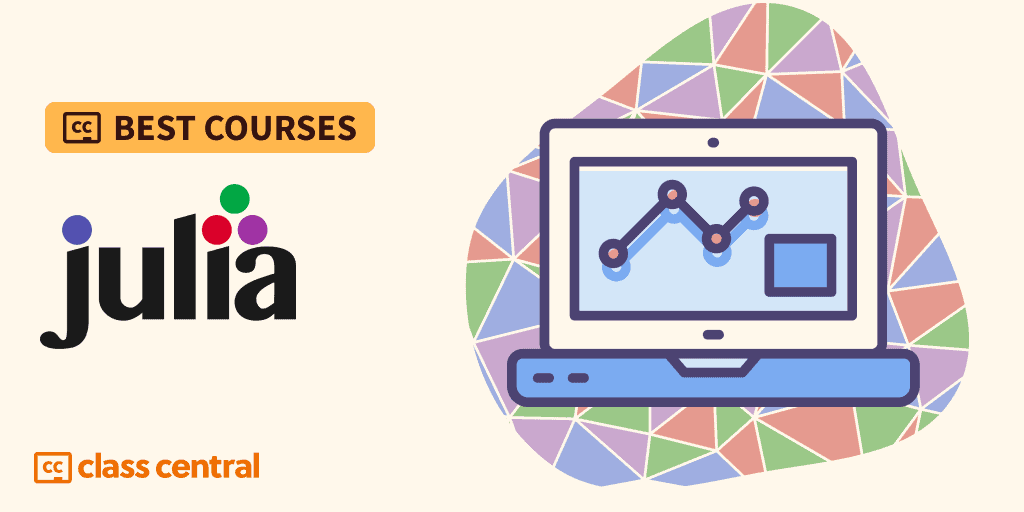
Python and R are the go-to languages for data science and scientific computing for good reasons: they’re user-friendly, well-documented, and backed by a thriving developer community.
But there’s a catch: they’re also slow. Most developers work around this by writing performance-critical code in much faster languages like C or Fortran. The problem? Who has time to juggle two languages?
Julia is the solution. It’s a high-level language that’s as easy to use as Python or R, but with the speed of C or Fortran. You get a single language for your entire workflow, from prototyping to production — you don’t have to choose between simplicity and performance. And, it’s got a rapidly growing ecosystem of over 10,000 packages and a welcoming scientific community to boot, much like R’s. So if you’re tired of the two-language shuffle, give Julia a shot — your code (and your sanity) will thank you!
To do my part in spreading the word of Julia, I’ve compiled a list of the best free and paid online courses to learn Julia 1.6+ in this Best Courses Guide (BCG). These courses come from our catalog, as well as recommendations from Julia users on Slack, Forem, and Discord communities. Most of the courses are free or free-to-audit, coming from prestigious universities and institutions: MIT, TU Berlin, and BETA, while two offer a free certificate upon completion from JuliaAcademy.
Click on the shortcuts for more details:
- Top Picks
- What is Julia?
- Courses Overview
- Why You Should Trust Us
- Best Courses Guides (BCG) Methodology
Here are my top picks. Click on one to skip to the course details:
What is Julia?
Julia is a high-level, high-performance dynamic programming language developed specifically for scientific computing and data science. It is designed to run as fast as C but easy to write as Python.
One of the ways Julia is easy to use is its dynamic type system. By allowing the option to implicitly or explicitly declare types, programmers can simplify or improve code performance.
The language also features multiple dispatch, which means methods with the same name can perform different functions based on the arguments provided, which is especially useful for mathematical code where operators change their behavior depending on the type.
Metaprogramming is easy in Julia. Similar to Lisp, code can be represented as a data structure in Julia itself, so a Julia program can process and modify its own code. Furthermore, it is simple to call libraries written in a different language like C or Python without the need of glue code.
Although Julia is a young programming language (it was released in 2018), researchers and professionals have already utilized it in a variety of fields where enormous amounts of data needs to be processed in a reasonable amount of time, like in physics, chemistry, astronomy, engineering, data science, bioinformatics, finance and many more. Plenty of Julia programming jobs are also available, and are being advertised on the Julia discourse community.
Courses Overview
Here are some aggregate stats:
- Thirteen courses are free, free-to-audit, or have a free trial
- Over 900 people are following Class Central’s Julia Subject
- Eight courses are beginner-level, while seven require some programming experience.
- All the courses use Julia 1.6+ (latest is Julia 1.10) unless mentioned otherwise.
Best Free YouTube-Structured Series for Complete Beginners (doggo dot jl)
Want to learn Julia, but don’t know anything about coding?
Julia for Absolute Beginners will give you an introduction to general programming concepts from the ground up with Julia, including installing and setting up the Julia programming environment, using VS Code as an IDE, and Pluto notebooks for interactive coding.
By the end of this free YouTube course, you’ll have an excellent understanding of Julia and programming in general.
In this course, you’ll learn:
- Essential programming concepts: set up development environment, cover variables, expressions, memory, and data types
- Data structures and control flow: learn about arrays, tuples, dictionaries, conditionals, loops, and functions
- Advanced Julia programming: explore multiple dispatch, composite types, style guidelines, debugging, and Julia packages
- Intermediate computer science: understand algorithms (searching and sorting), analysis, recursion, and peek into Julia’s workings
- Course recap: summarize and reinforce learned concepts and where to find help.
Julia is the first programming language the instructor has learned. In fact, he is entirely self-taught! He also has several other specialized Julia courses, such as on Data Analysis, Scientific Computing, and
Probabilistic Programming. So if you love this course, make sure to check the others out!
| Channel | doggo dot jl |
| Provider | YouTube |
| Prerequisites | None |
| Workload | 4 hours |
| Views | 45K |
| Likes | 530+ |
| Cost | Free |
| Exercises | Follow along with videos and projects |
| Certificate | None |
Best Free Rigorous Course with Examples of Real-World Applications (Massachusetts Institute of Technology)
Introduction to Computational Thinking provides a rigorous but rewarding introduction to computational thinking. It’s designed for students with little to no knowledge of programming.
The goal of this free course is to broaden your understanding of how computer science and mathematics can connect and mingle with one another to produce exciting applications in other non-related fields like social and climate science.
Although it isn’t strictly a course on Julia, it does aim to teach you Julia. All of the programming in this course is done in Julia, so you’ll be proficient in the language by the time you finish this course.
One thing I love about this course is that you’ll learn from multiple instructors who are all accomplished people:
- Prof. Alan Edelman: One of the co-creators of the Julia programming language itself.
- Prof. David P. Sanders: A Professor at the Universidad Nacional Autónoma de México and also a Visiting Professor at MIT.
- Grant Sanderson: Runs the most popular math educational channel 3Blue1Brown.
- Dr. James Schloss: Runs the computer science educational channel Leios Labs.
You’ll learn from YouTube lectures with code demonstrations, as well as interactive Notebook exercises. Some of the topics you’ll cover include:
- Images and transformations: represent images as pixel arrays, apply mathematical functions for creative manipulation, explore dynamic programming, and seam carving for image resizing
- Social science and data science: cover principal component analysis for dimensionality reduction, sampling datasets, random walks modeling, and simulation of real-world statistical applications
- Climate science: focus on time-stepping for time analysis in datasets, understand climate prediction versus weather prediction, build a basic climate model, and explore advanced models such as ocean currents and global warming.
Alan Edelman is a professor of applied mathematics at MIT and is in fact one of the cocreators of the Julia programming language. There’s also a discord server open to both MIT and non-MIT students where you can ask questions and maybe find a course grading partner.
| Institution | Massachusetts Institute of Technology |
| Instructors | Alan Edelman, David P. Sanders, and Charles E. Leiserson |
| Prerequisites | None |
| Workload | 24–36 hours |
| Cost | Free |
| Exercises | Examples in Julia notebooks |
| Certificate | None |
Best Paid Introductory Course for Julia Programming (İlker Arslan)
One of the best courses to learn Julia programming and only that is Programming with Julia.
Dr. İlker Arslan is the Chief Information Officer at a finance firm with more than 20 years of experience in data science and analytics. In his paid Udemy course for absolute coding beginners, you’ll pick up the programming concepts needed to write efficient Julia code, including advanced techniques like metaprogramming and parallel programming.
You’ll learn through video lectures by following a code-along approach and refresh your memory with quizzes.
Here’s what you’ll cover:
- Variables, Data Types, and Operations
- Data Structures
- Conditionals and Loops
- Functions
- Methods
- Modules and Packages
- Metaprogramming
- Parallel Programming
| Provider | Udemy |
| Instructor | İlker Arslan |
| Prerequisites | None |
| Workload | 10 hours |
| Enrollments | 4.2K |
| Rating | 4.6/5.0 (429) |
| Cost | Free |
| Exercises | Code demos and quizzes |
| Certificate | Paid |
Best Free Introductory Book to Data Science for Programmers (Jose Storopoli)
Julia Data Science is a free book that covers the Julia programming language and its application to data science and machine learning.
Written for programmers, you’ll learn how to use Julia (including popular Julia packages) for data manipulation, visualization, and machine learning through examples and case studies.
The five main topics I’d like to highlight from the book are:
- Julia Basics: A brief overview of Julia and its features. Development environment, syntax, data structures, filesystem, and the standard library are discussed.
- DataFrames.jl: Storing data in a tabular format and its subsequent operations for analysis and summary. Additionally, a note on handling missing values.
- DataFramesMeta.jl: A wrapper package for easy data wrangling. You’ll learn a type of metaprogramming called macros and its use in selecting, sorting, summarizing, and chaining.
- Makie.jl: An interactive multi-platform plotting ecosystem for Julia. You’ll learn how to create and configure various plots and theme them.
- AlgebraOfGraphics.jl: A package using Makie.jl under-the-hood aiming to abstract away some common patterns in data visualization.
Thus if you’re new to Julia and Data Science, this book will help you get up to speed.
| Provider | Independent |
| Authors | Jose Storopoli, Rik Huijzer, and Lazaro Alonso |
| Prerequisites | Programming experience |
| Workload | N/A |
| Cost | Free |
| Exercises | Code examples |
| Certificate | None |
Best Free Introductory Course for Machine Learning (TU Berlin)
Are you a programming beginner interested in machine learning (ML) with Julia? Good news: all you need to start this free university course is common programming concepts like for-loops and arrays!
Offered by Prof. Klaus-Robert Müller’s Machine Learning Group at TU Berlin, JuML introduces you to the Julia programming language and its machine learning ecosystem.
You do need a good grasp of calculus especially for implementing automatic differentiation. Check out our Calculus BCG to brush up on that.
The course is split into four weeks:
- Weeks 1–3: The first three weeks focus on teaching the fundamentals of the Julia programming language. They’ll also include “guided tours” of the Julia ecosystem, such as popular packages for plotting (Plots.jl), data-frames (DataFrames.jl), and classical machine learning algorithms (MLJ.jl).
- Week 4: A comprehensive lecture on automatic differentiation (AD) sheds light on differences between Julia’s various AD packages, before giving a brief overview of Flux.jl’s Deep Learning ecosystem.
This course lectures and exercises are interactive Notebooks. You can run them right in the browser: In the top right click “Edit or run this notebook” and select binder.
| Institution | TU Berlin |
| Provider | Independent |
| Instructor | Adrian Hill |
| Prerequisites | Basic programming experience and calculus |
| Workload | N/A |
| Cost | Free |
| Exercises | Julia Notebooks |
| Certificate | None |
Best Free Introductory Course for Scientific Programming (Czech Technical University)
Do you know Julia but can’t ‘think Julia’? Scientific Programming in Julia, a free course taught at the Czech Technical University will show you how!
Building up on your basic experience with Julia, you’ll learn how to write fast, extensible, reusable, and easy-to-read code using optional typing, multiple dispatch, and functional programming concepts. You’ll also pick up more advanced techniques, including implementing your own automatic differentiation in the Notebooks provided.
You’ll learn:
- The power of type system & multiple dispatch
- Good practices and structured thinking with design patterns
- Organization of the code with packages, unit tests, & CI
- Performance benchmarking and profiling
- Metaprogramming and its uses, including macros and intermediate representation
- Automatic differentiation and Ordinary Differential Equations
- Parallel and GPU programming
If you want an intro to the Julia language from the same university, check out Julia for Optimization and Learning.
| Institution | Czech Technical University |
| Provider | Independent |
| Instructors | Tomáš Pevný and Vašek Šmídl |
| Prerequisites | Basic Julia programming |
| Workload | N/A |
| Cost | Free |
| Exercises | Julia Notebooks |
| Certificate | None |
Best Free Introductory Course to Julia for Scientific Programming and Machine Learning (BETA)
SPMLJ is a free interactive, multi-channel and collaborative MOOC developed at BETA, a joint research unit of the University of Strasbourg, CNRS, and University of Lorraine, with support from the French National Research Agency.
It’s intended for data scientists and researchers who want to learn the Julia programming language and apply it to scientific programming and machine learning tasks.
With 15 hours of videos, 15 interactive quizzes with 52 questions and 7 guided exercises, the course is as impressive as it sounds:
- Basic Julia programming:
- Covers Julia’s syntax, data structures, custom types, metaprogramming, and parallel computation
- Scientific programming with Julia:
- Focuses on data wrangling using DataFrames, probabilistic modeling with Distributions, curve fitting with LsqFit, and constrained optimization with JuMP
- Introduction to machine learning:
- Provides intuition for machine learning concepts like supervised learning, cross-validation, and regularization. You’ll implement the perceptron linear classifier
- Neural Networks:
- Discusses neural network models, architectures like CNNs and RNNs, and how to train them. You’ll implement these concepts using Julia packages.
While no prior experience with Julia or machine learning is required, the course does assume some basic knowledge of programming, calculus, statistics, and linear algebra.
| Institution | AgroParisTech & Bureau d’Economie Théorique et Appliquée |
| Provider | Independent |
| Instructor | Antonello Lobianco |
| Prerequisites | Basic knowledge of programming, calculus, statistics, and linear algebra. |
| Workload | N/A |
| Cost | Free |
| Exercises | Quizzes and Julia notebooks |
| Certificate | None |
Best Free Introductory Course for Economists (Cameron Pfiffer)
Do you work in or study economics? Even if you don’t, continue reading.
Cameron Pfiffer is the lead developer of Turing.jl — a powerful package for probabilistic programming. Over the past four years, Cameron has been honing his skills in Julia, learning valuable lessons along the way. Now, in this free YouTube bootcamp held at Stanford University, he’ll share his knowledge from the ground up — no programming knowledge required.
You’ll be provided Jupyter notebooks filled with notes and exercises to follow along. The programming skills you’ll pick up from this course are highly practical and applicable everywhere, so even if you already know some programming or have no interest in economics, I still recommend you take a look at the course syllabus and gauge your interest:
- Julia basics:
- A gentle introduction to the Julia language (variables & functions) and its ecosystem (best practices & packages), with examples of data analysis, linear algebra, statistics problems that economists typically deal with
- Parallelization:
- How to parallelize large data processing tasks for faster code. You’ll achieve this with multi-threading (imagine having friends help you move) and multi-processing (imagine hiring multiple moving companies to handle different tasks)
- Optimization and Automatic Differentiation:
- Plotting the efficient frontier, a classic result in finance, is straightforward using the optimization tools in Julia. You’ll also see how automatic differentiation allows you to easily compute derivatives for optimization problems with non-linear objective functions.
- High-performance Julia:
- How do you write Julia code that (reliably) goes fast? Topics cover include tracking memory allocation, tackling type instability, closures, and utilizing profiling and code analysis tools.
- Computational Bayesian statistics:
- Cameron’s chief speciality — Bayesian statistics. You’ll learn how Bayesian methods allow for making predictions and understanding data better by leveraging the posterior distribution of model parameters, such as in a Markov chain Monte-Carlo example.
| Institution | Stanford University |
| Provider | YouTube |
| Instructor | Cameron Pfiffer |
| Prerequisites | None |
| Workload | 12–13 hours |
| Views | 2.4K |
| Cost | Free |
| Exercises | Jupyter notebook exercises |
| Certificate | None |
Best Free Introductory Course for Quantitative Economics (QuantEcon)
If you prefer reading, this free comprehensive tutorial is equally as impressive as the previous course.
Quantitative Economics with Julia aims to give students and researchers the practical programming skills needed to solve and analyze quantitative economic models. It assumes some prior knowledge of economics and mathematics.
One cool thing about this course is that you can run any page as a Jupyter Notebook online! Click on the “Launch Notebook” icon in the top right corner, select “Colab” in the Public server dropdown, and then launch the Google Colab instance. Thus, you can solve the programming exercises provided (with solutions) right in the browser.
Also, just like the previous course, many of the programming skills you’ll learn here will be relevant everywhere, as evidenced by the syllabus:
- Julia programming fundamentals
-
-
- Setting up the Julia environment
- Essential syntax, data types, and generic programming concepts
- Working with key packages for data analysis, optimization, etc.
-
- Software engineering best practices
-
-
- Using VS Code, GitHub for version control and collaboration
- Creating well-tested, performant Julia packages
-
- Mathematical and statistical techniques for economics
-
-
- Linear algebra, orthogonal projections, factorizations
- Limit theorems, Markov chains, Kalman filtering
- Applications of these techniques in economics
-
- Dynamic programming methods
-
-
- Solving microeconomic models (job search, optimal growth, savings, etc.)
- Handling various model features (stochastic shocks, constraints, etc.)
- Different solution algorithms (time iteration, endogenous grid method, etc.)
-
- Continuous time modeling
-
-
- Using differential equations to model dynamics (e.g. COVID-19)
- Incorporating stochastic shocks via stochastic differential equations
-
- Models with multiple agents and expectations
-
-
- Schelling’s segregation model, employment models
- Rational expectations and Markov perfect equilibria
- Asset pricing with finite and infinite states, complete and incomplete markets
-
- Time series analysis
-
-
- Covariance stationary processes, spectral analysis
- Classical control and filtering using linear algebra
-
- Advanced dynamic programming
-
- Stackelberg leader-follower problems
- Optimal taxation with and without state-contingent debt
| Institution | QuantEcon |
| Provider | Independent |
| Instructor | Jesse Perla, Thomas J. Sargent,and John Stachurski |
| Prerequisites | College-level understanding of statistics and economics |
| Workload | N/A |
| Cost | Free |
| Exercises | Jupyter notebook exercises |
| Certificate | None |
Best Free Hands-On Book to Data Science for Programmers (Federico Carrone)
Do you like to learn by tinkering and experimenting with hands-on projects? Then you’re Data Science in Julia for Hackers prime audience.
This free book takes a project-based, results-driven approach. It teaches concepts through motivating real-world examples and datasets, from analyzing NBA games to MMORPG games. And since you’re a tinkerer, you won’t use any third-party libraries — everything will be done in base Julia.
Although the book was intentionally written to not be an academic textbook, there is some calculus involved, so having some knowledge of programming and calculus would go a long way.
The course is structured into five parts, in which you’ll learn:
- Data Science and Julia: Introduction to the Julia programming language and its ecosystem
- Bayesian Statistics: The meat of the book’s contents. You’ll be introduced to probability, including Bayes theorem, and learn its use in filtering spam emails, escaping from Mars’s gravity, and football simulations
- Deep Learning: You’ll build a convolutional neural network model to classify images of bees and wasps
- Scientific Machine Learning: You’ll connect machine learning and science through a study on how the MMORPG Ultima Online implemented a prey-predator population and its unexpected consequences
- Time Series and Forecasting: The course lays the foundations for time series analysis, focusing on the exponential smoothing method.
The online site of the book is static. If you want to learn interactively, download the GitHub repo and run the .jl files in a Pluto notebook.
| Provider | Independent |
| Authors | Federico Carrone, Herman Obst Demaestri and Mariano Nicolini |
| Prerequisites | Some programming experience and basic Calculus |
| Workload | N/A |
| Cost | Free |
| Exercises | Code examples |
| Certificate | None |
Best Free Exercise Platform for All Levels (Exercism)
Exercism is an online, open-source, free coding platform where you can practice coding and receive mentorship in the Julia programming language. It is recommended by the official Julia website as a great place to put your skills and knowledge into practice.
One special thing about this platform is that you’ll receive personal mentoring for free. When you have solved an exercise, after automatic analysis, it can be reviewed by the volunteer team and feedback will be given to help you improve your code.
Exercises range from easy to hard, so the platform is suitable for all levels of programmers.
Exercises:
- 59 exercises: varied difficulty levels, easy to medium and hard
- Tutorial: start with “Hello, World!” printing
- Easy exercises: find difference of squares, calculate leap years, and implement a rotational cipher
- Medium exercises: create a clock for times without dates, write a robot simulator, and calculate a Pythagorean triplet
- Challenging exercises: solve alphametics puzzles, implement rational and complex numbers in Julia.
Exercism provides exercises on 60+ programming languages including Python, Kotlin, F#, and WebAssembly. Their mission is to help everyone get really good at programming, regardless of their background, share the love of programming, and help people upskill as part of their upward social mobility.
| Institution | Exercism |
| Prerequisites | None |
| Workload | Self-paced |
| Enrollments | 17K |
| Exercises | Hands-on practice |
| Certificate | None |
Best Paid Hands-on Project-Based Course for Data Science (Joris Limonier)
In Learn Julia in Three Small Projects, you’ll get familiar with Julia by building a series of real-world projects.
You’ll complete three projects: a simple stock tracker for a shop; joining the fight against a global pandemic by plotting and modeling the effectiveness of several measures; and finding the cure for a global pandemic using Longest Common Subsequences (LCS), which measures the similarity between two sequences of characters.
By the end of the paid course, you’ll go from beginner-level to solving everyday, real-world problems using Julia.
To take this course, you need some basic mathematics and statistics as well as basic programming skills.
What you’ll learn:
- Gain experience with essential and advanced Julia tools: functions, arrays, dictionaries, multiple dispatch, and composite types
- Project 1: build a shop stock tracker with functions for inventory, sales, and cash transactions
- Project 2: fight a fictional global pandemic using Julia for plotting, estimating new cases, analyzing measures, time-series forecasting, and reporting findings
- Project 3: find a cure for another fictional global pandemic by identifying the virus’s origin using Longest Common Subsequences to compare animal sequences with the virus sequence.
Joris Limonier has worked at the Unit of Research in Computer Science at the University of Luxembourg and has a strong background in Julia, Python for data science, LaTeX, and Swift. To share his passion for Julia, he creates Julia content including YouTube videos and open-source projects on GitHub.
| Provider | Manning |
| Instructor | Joris Limonier |
| Level | Beginner to Advanced |
| Workload | 12–18 hours |
| Exercises | Hands-on coding |
| Certificate | None |
Best Paid Concise Course for Experienced Programmers (Xavier Morera)
In this Pluralsight course with 10 days of free trial, you’ll learn the foundational knowledge needed to write Julia code. By the end, you’ll have the skills and knowledge required to call yourself a Julia coder.
To take Julia: Getting Started, you’ll need an understanding of programming in general (preferred knowledge of Python, R, or Scala), and as a bonus, a mathematical background.
What you’ll learn in this course:
- “Why Julia?”: explore the reasons for choosing Julia
- Setup: learn to set up your Julia development environment
- Coding basics: define variables, use data types, and control program flow
- Advanced coding: create functions, methods, and modules for code reusability, work with files
- Package utilization: discover JuliaHub for finding packages to enhance your code and build diverse applications.
Xavier is an entrepreneur, project manager, technical author, trainer, and holds some certifications with Cloudera, Microsoft, and the Scrum Alliance, along with being a Microsoft MVP.
| Institution | Pluralsight |
| Instructor | Xavier Morera |
| Prerequisites | Basic programming experience |
| Workload | 2–3 hours |
| Rating | 4.5 / 5.0 (13) |
| Exercises | Code demos |
| Certificate | Paid |
Best Free Certificate Course for Complete Beginners (JuliaAcademy)
If you have no programming experience or feel intimidated by computers, but are curious about learning to write code in Julia this course is for you!
Recommended by the official Julia website, Julia Programming for Nervous Beginners take small steps up all the way to Julia proficiency and proficiency in programming in general. By the end, you’ll be able to tackle substantial projects all on your own with only what you’ve learned in this course. Plus, you’ll earn a free certificate.
No prior programming experience is needed for this course.
What you’ll learn:
- Write, run, and analyze Julia code
- Assign variables and perform operations
- Debug code using error messages
- Introduction to boolean logic
- Manipulate text (strings) in Julia
- Introduction to reusable code with functions
- Learn about Julia’s type system and multiple dispatch
- Explore scopes in relation to functions
- Control code flow with comparison, logical operators, conditionals, and loops
- Understand anonymous functions
- Study handling text files with I/O functions
- Read and manipulate text files
- Perform a Monte Carlo simulation on a sample text file.
Dr. Henri Laurie is retired senior lecturer from the University of Cape Town. The course has 80+ bookmarks on Class Central, and it is also recommended by the official Julia website. You can ask questions on the support forum.
| Institution | JuliaAcademy |
| Instructor | Dr. Henri Laurie |
| Prerequisites | None |
| Workload | 7–8 hours |
| Exercises | Quiz |
| Certificate | Free |
Best Free Certificate Course for Experienced Programmers (JuliaAcademy)
Introduction to Julia (for programmers), also by JuliaAcademy, is for those who already have programming experience get up to speed with Julia, fast! And, you’ll also get a free certificate once you’ve completed the course.
In this course, you’ll learn:
- Basics: variables and data types
- Operators and data structures: understand Julia’s operators, strings, dictionaries, tuples, and arrays
- Loops and conditionals: write loops and conditional statements for program control
- Functions in Julia: explore function declaration, mutable vs. non-mutable functions, and broadcasting
- Packages: manage and use packages from the general registry for efficient programming
- Data visualization: utilize Plots.jl for creating various plots
- Key features: discuss multiple dispatch, structs, basic linear algebra, and factorizations in Julia.
Note that the course uses the first release version Julia, 1.0. So I don’t recommend taking this course unless you need to.
Dr. Jane Herriman is Director of Diversity and Outreach at Julia Computing and a PhD student at Caltech. The course has 60+ bookmarks on Class Central.
| Institution | JuliaAcademy |
| Instructor | Dr. Jane Herriman |
| Prerequisites | Basic programming experience |
| Workload | 1–2 hours |
| Exercises | Coding practice |
| Certificate | Free |
Why You Should Trust Us
Class Central, a Tripadvisor for online education, has helped 60 million learners find their next course. We’ve been combing through online education for more than a decade to aggregate a catalog of 200,000 online courses and 200,000 reviews written by our users. And we’re online learners ourselves: combined, the Class Central team has completed over 400 online courses, including online degrees.
Best Courses Guides (BCG) Methodology
I built this ranking following the now tried-and-tested methodology used in previous Best Courses Guides (you can find them all here). It involves a three-step process:
- Research: I started by leveraging Class Central’s database and the internet. Then, I made a preliminary selection of the courses by rating, reviews, and bookmarks.
- Evaluate: I read through reviews on Class Central, Reddit, and course providers to understand what other learners thought about each course and combined it with my own experience as a learner.
- Select: Well-made courses were picked if they presented valuable and engaging content. They have to fit a set of criteria including comprehensive curriculum, selling price, release date, ratings and enrollments.
Pat revised the research and the latest version of this article.



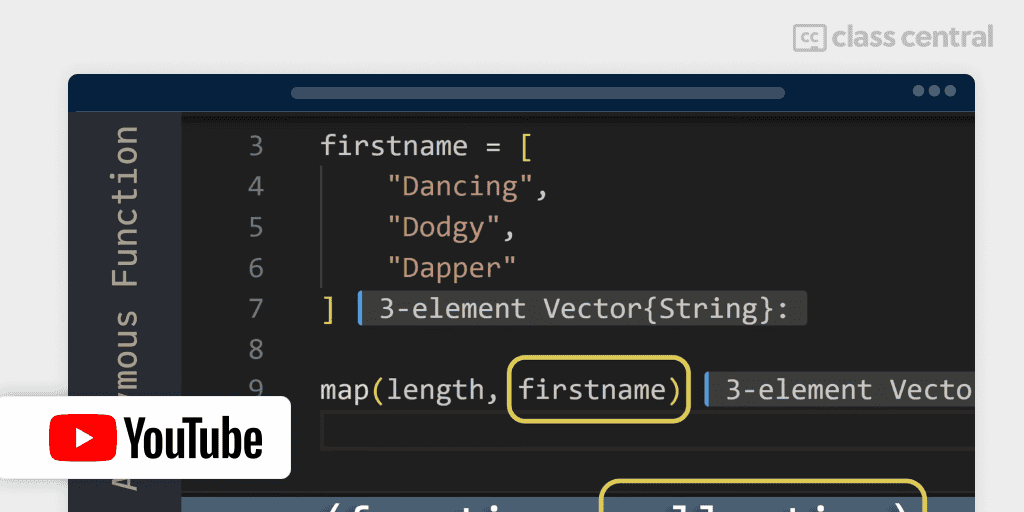
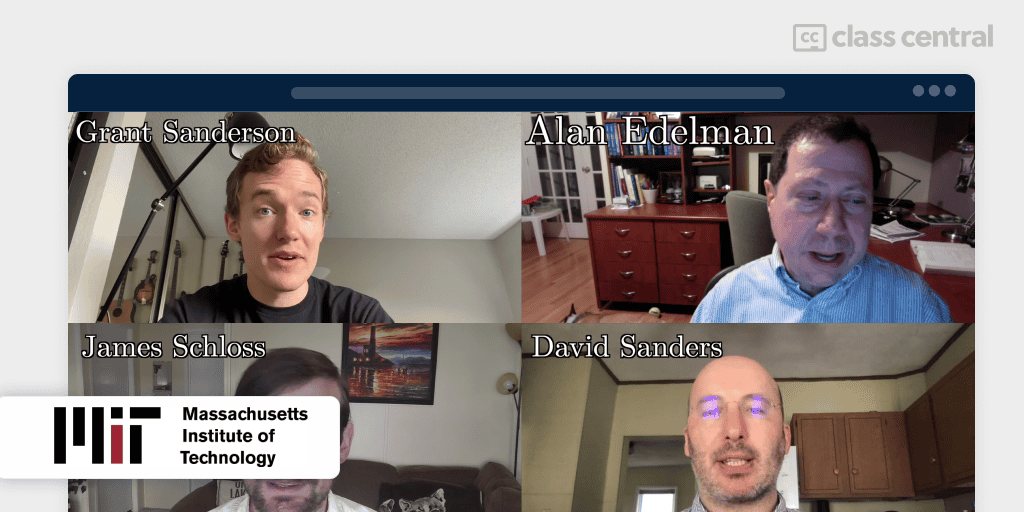

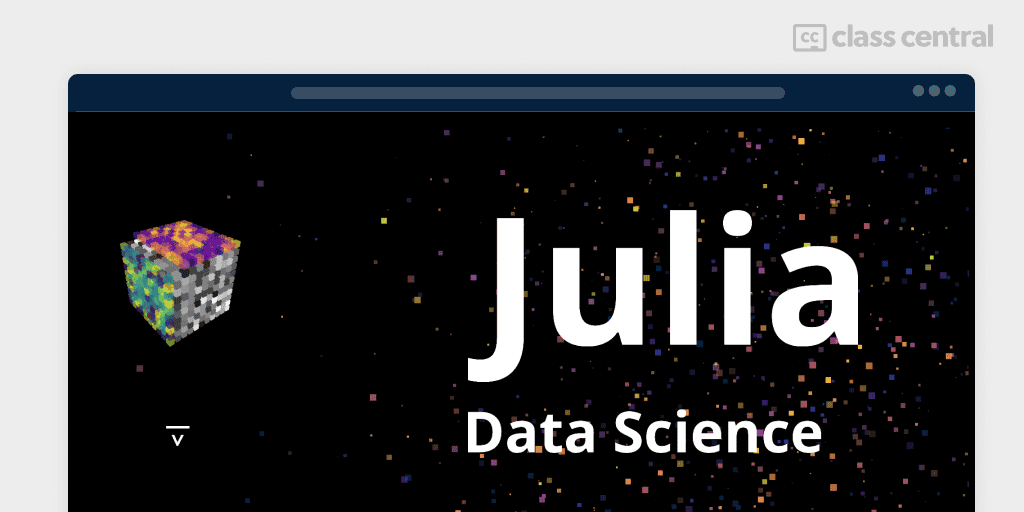
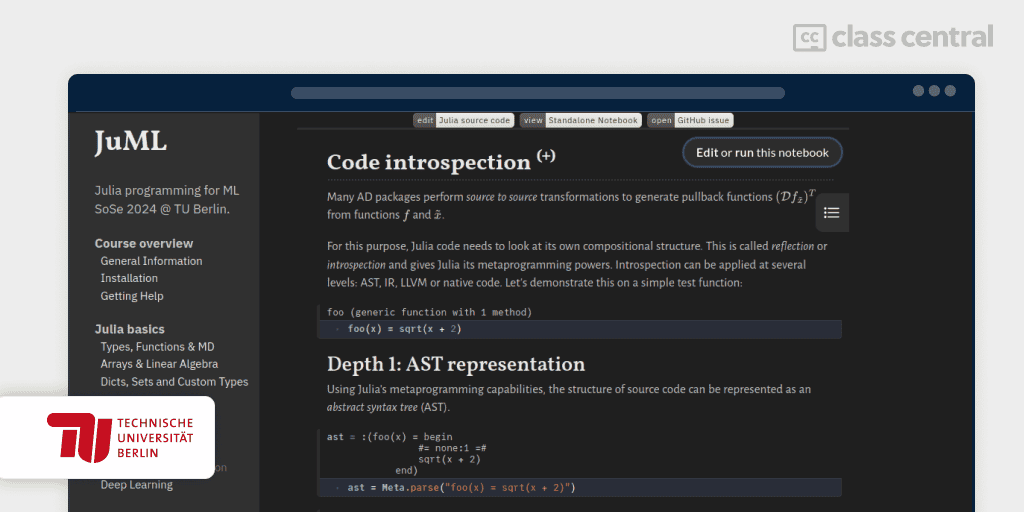
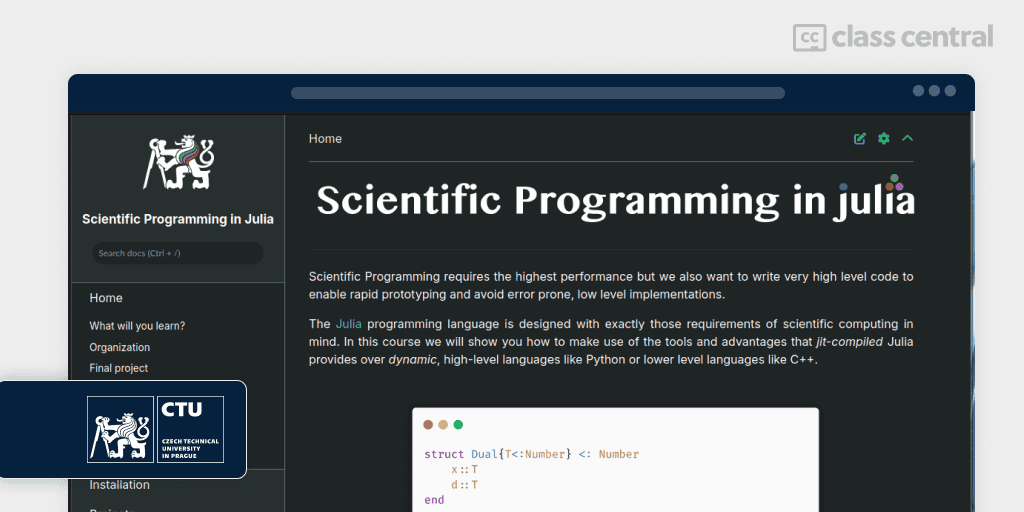
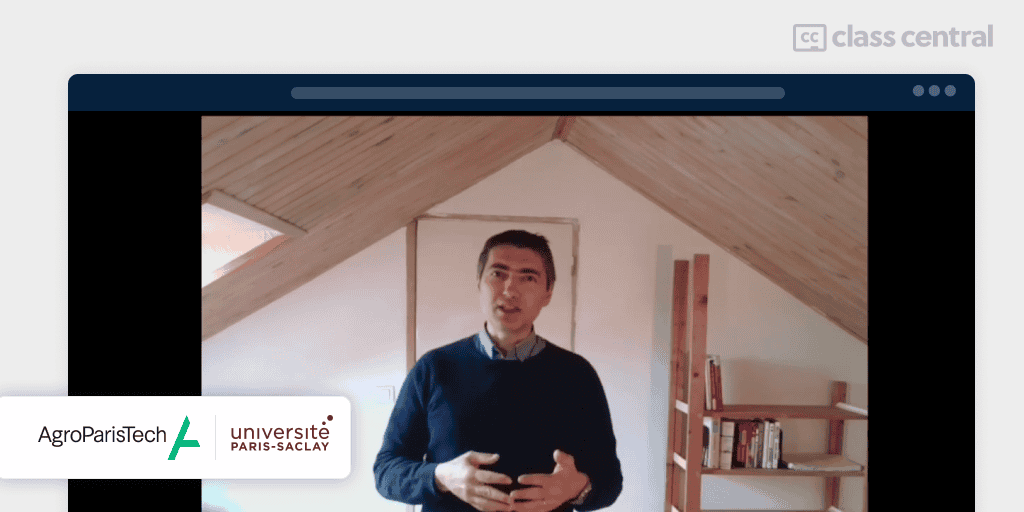
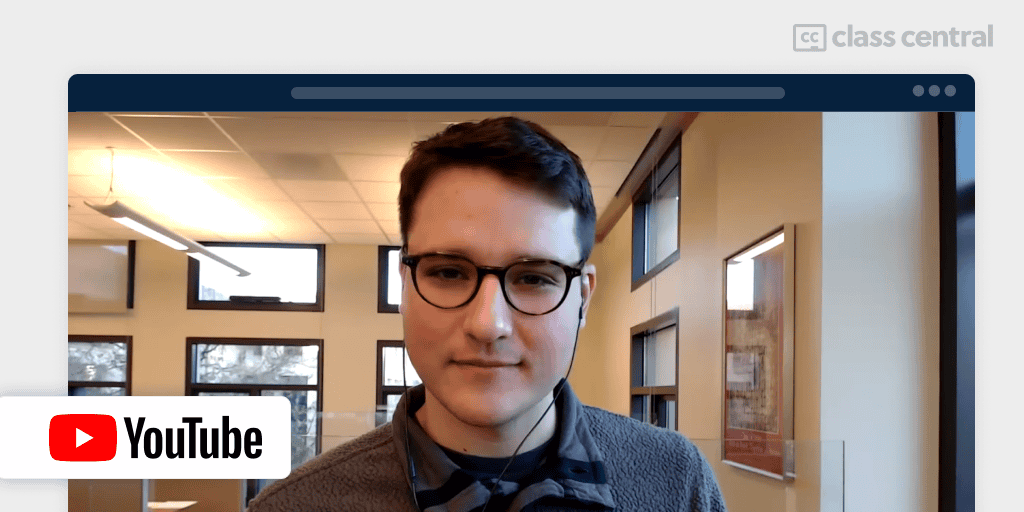
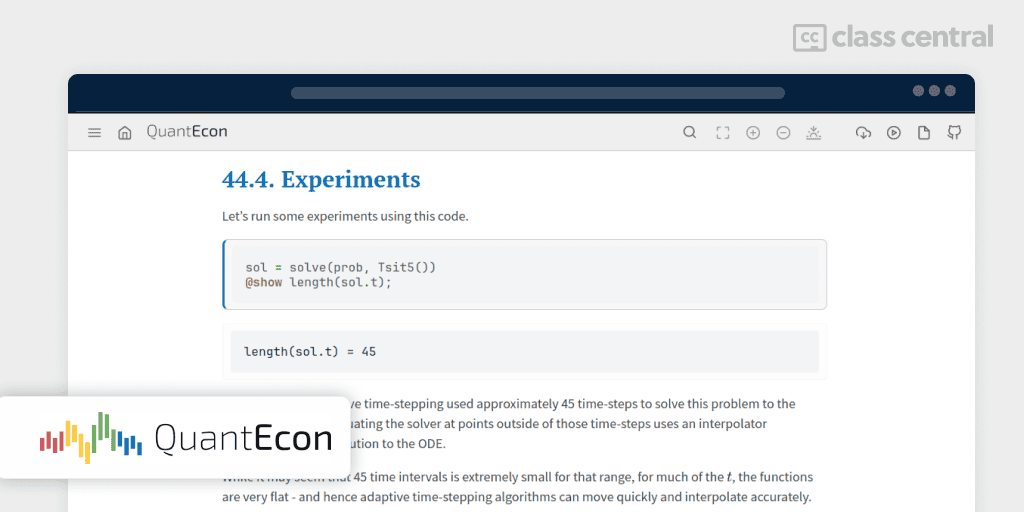
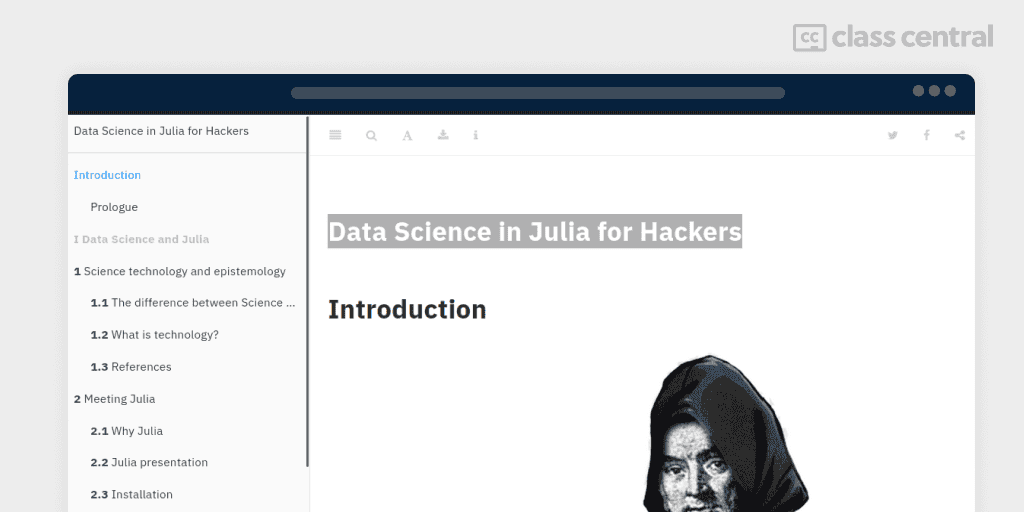
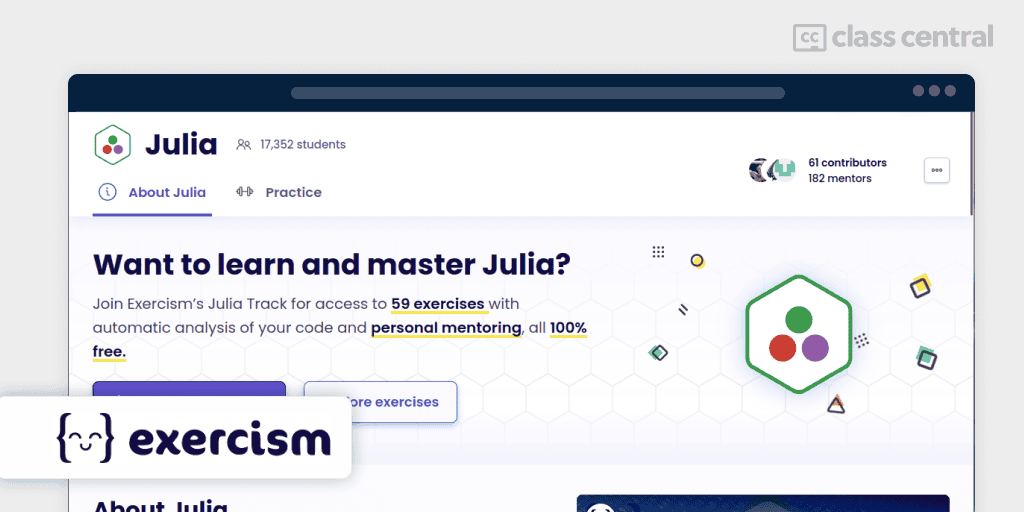
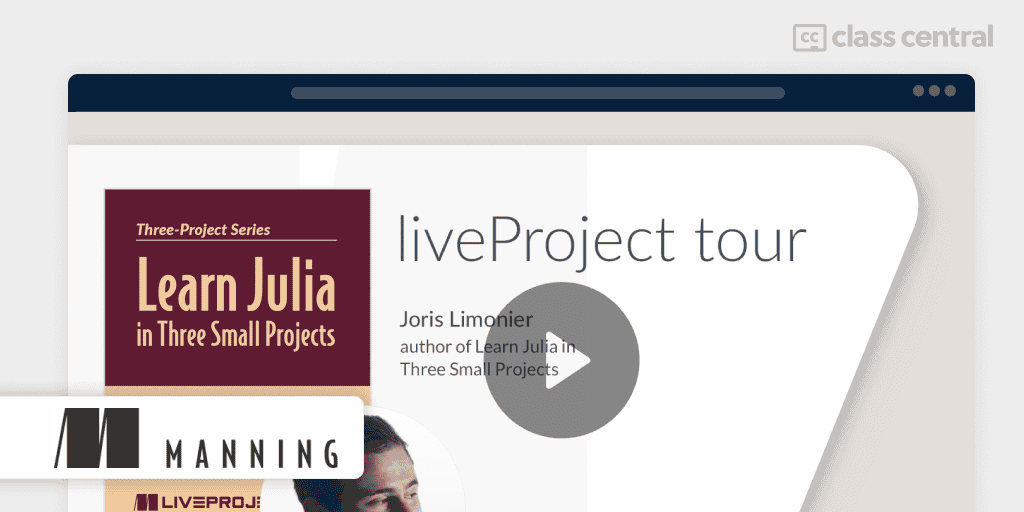
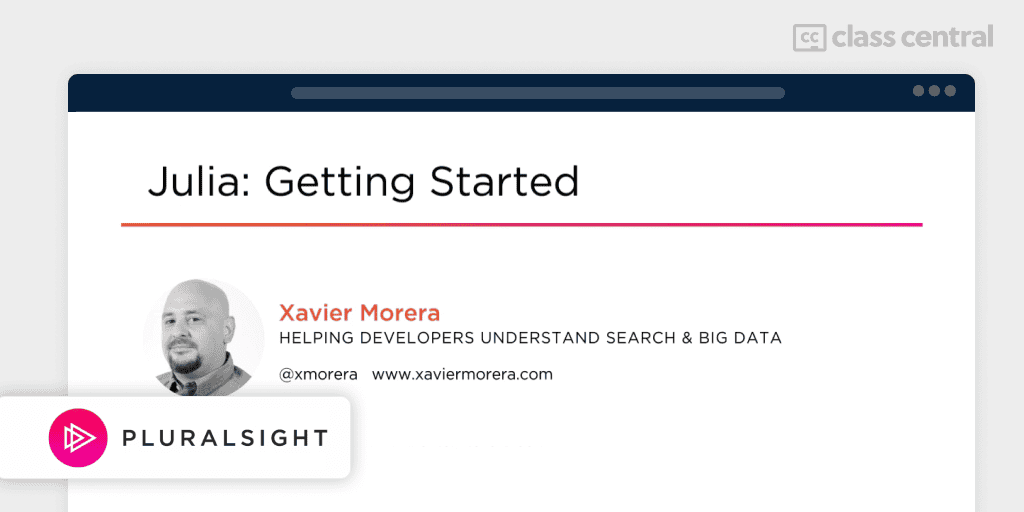
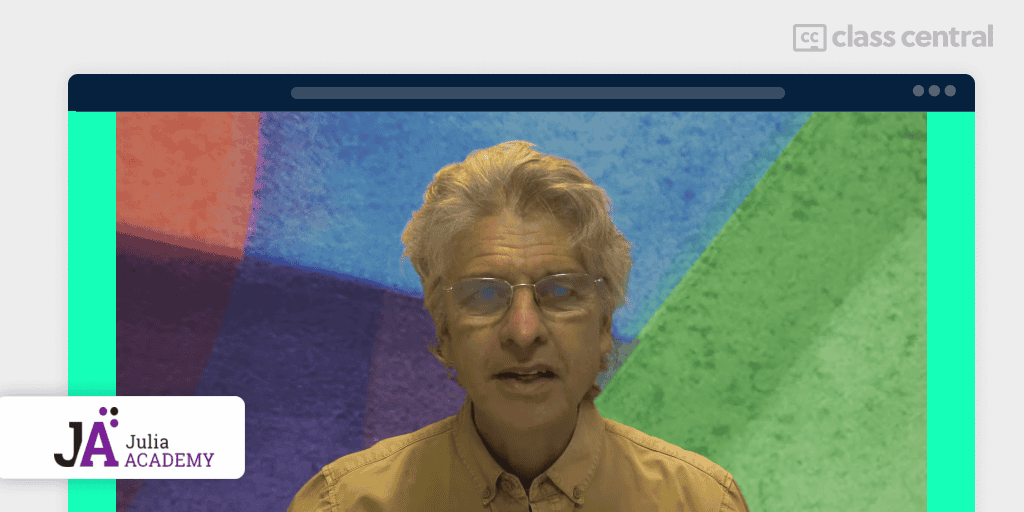
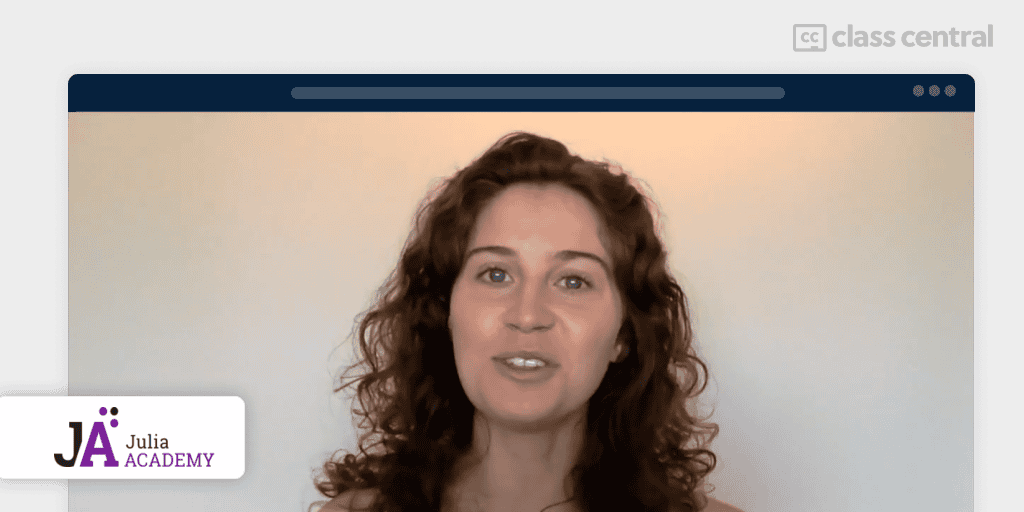






Michał
Thank you!